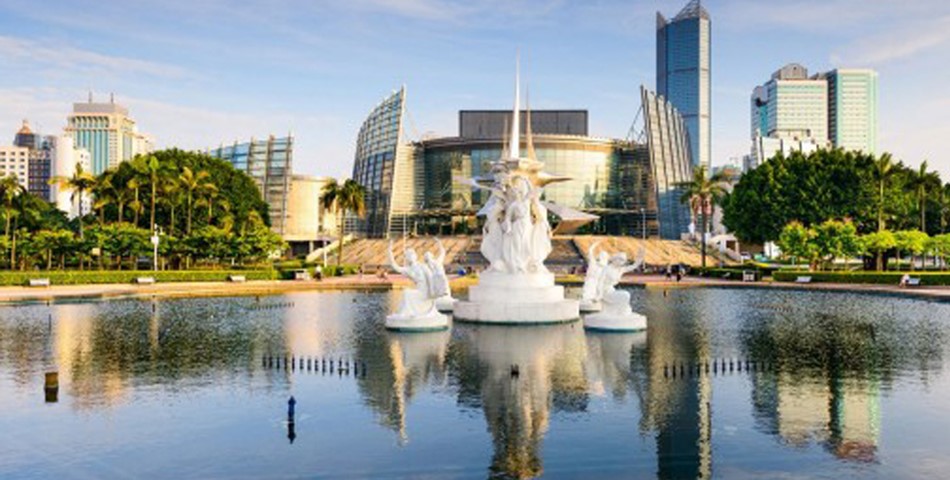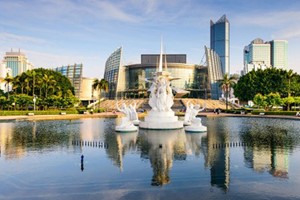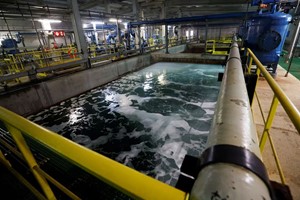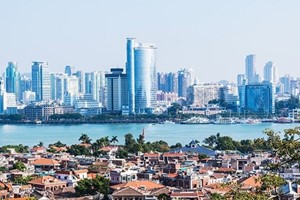In 2015, China launched its sponge city pilot program to tackle unwanted runoff and address water scarcity and pollution challenges, a necessary goal considering that 62 percent of Chinese cities experience flooding, 48 percent face high to extremely high-water stress and 2,100 waterways are identified as black and odorous. Water flooding alone caused a direct cost estimated at USD57 billion in 2016.
The program includes central government subsidies reaching USD6 billion over three years with the ambitious goal of reusing 70 percent of rainwater in 80 percent of urban builtup areas by 2030. The 30 cities involved are installing green infrastructure (GI) assets like permeable paving and bioswales in addition to conventional drainage and stormwater capture infrastructure.
The pollution angle has also pushed policy makers to integrate river cleanup with large-scale wastewater treatment, with the goal of cleaning up all black and odorous waterways by 2030. As will be seen, the sponge city concept is complex.
It has its origins in Low Impact Development (LID) but has evolved far beyond this and is now seen as an urban development initiative aiming to integrate green infrastructure into urban design and create a Livable, Green and Water-Resilient City. However, as China is a country of great physical and social diversity, each city has its own unique challenges. Therefore, it is important to decode this new concept and identify good practices that have demonstrated effectiveness. To do this, five Chinese cities facing various challenges have been selected as examples in this white paper: Shanghai is the most developed city in the country, making it difficult to create room for new green space, while black and odorous river bodies have been a priority of Fuzhou City.
Tianjin is one of the most arid cities, and frequent flooding is stressing Guangzhou's drainage capabilities, while urban-rural development gaps in Pingxiang has created different demands in different areas. Each of these cities is developing its own custom solutions to create a sponge city model that could be implemented nationwide. Similarly, cities around the world have been looking for innovative ways to build water-resilient cities. Copenhagen implemented the Cloudburst Action Plan in 2012 and the comprehensiveness of the plan is expected to help the city avoid significant social and environmental costs of over USD2.28 billion. Singapore launched the Active, Beautiful, Clean (ABC) Waters program in 2006 to improve water management.
Washington D.C. has been a leader around the country when it comes to using green infrastructure. As part of its green infrastructure project, it sold the first ever Environmental Impact Bonds (EIB) of USD25 million in 2016. Berlin has agreed upon a new initiative in 2017 that all future building projects shall have 100 percent on-site stormwater management, and a separate stormwater fee has been charged since 2000. Nagoya is developing a network of reservoirs alongside green infrastructure design features as part of its master plan "Water Cycle Recovery Strategy 2050".
Despite the achievements realized through the sponge city development, some problems remain unaddressed, including a lack of funding and poor performance. An estimated investment of USD315 billion is expected between 2016 and 2020 to fulfil the sponge city targets in China, but a robust funding mechanism has yet to be established; and although some cities have spent hundreds of millions, the occurrence of waterflooding hasn't decreased and black and odorous waterways are still present. Therefore, identifying good practices is not enough - it is also important to leverage the existing expertise and to create a synergy where international best practices and Chinese experience can be integrated, and to discuss how the process of transitioning into a sponge city needs to shift from a technical focus to become more adaptive, inclusive, and innovative.
Global Water Intelligence
published in partnership with Grundfos
www.grundfos.com














